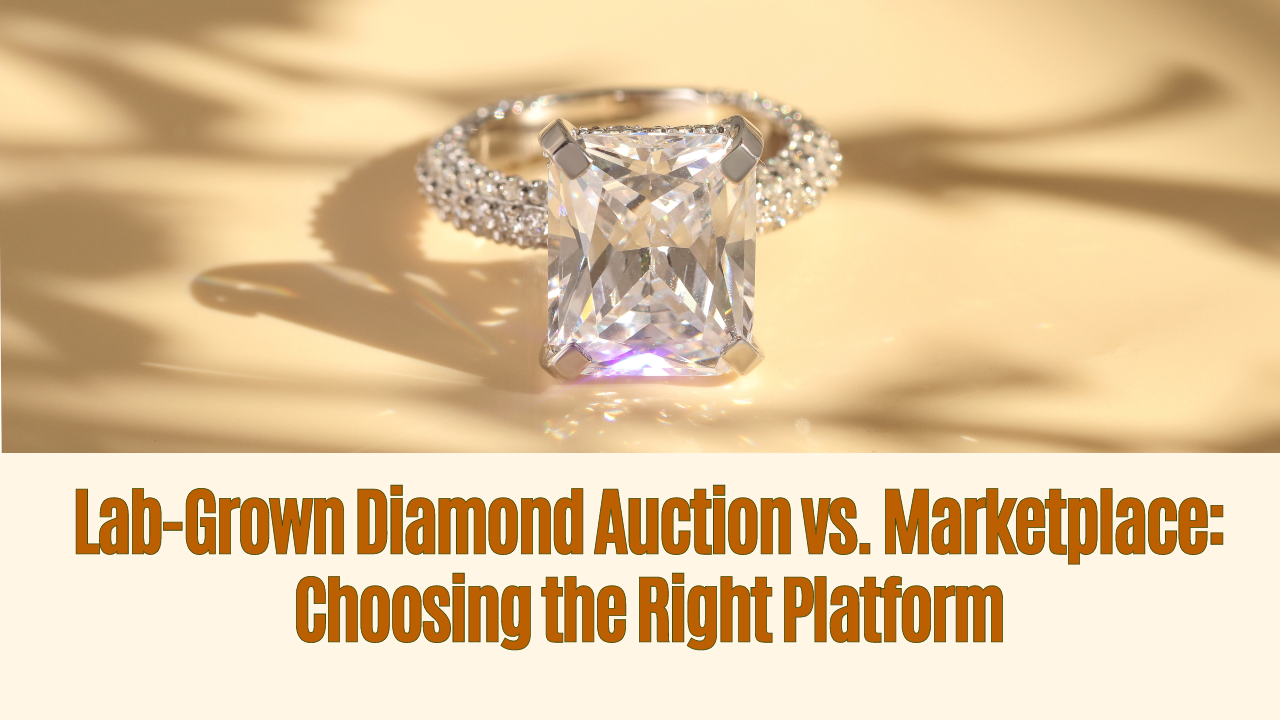Your cart is currently empty!
When it comes to buying or selling lab-grown diamonds, individuals often find themselves at a crossroads between utilizing an auction platform or a traditional marketplace. Each option offers unique advantages and considerations, catering to different preferences and objectives. Let’s explore the key differences between a lab-grown diamond auction and a marketplace to help you choose the right platform for your needs:
Lab-Grown Diamond Auction:
- Dynamic Pricing: Auctions facilitate dynamic pricing, allowing the market to determine the value of lab-grown diamonds through competitive bidding. This can potentially result in higher prices if multiple bidders are interested in the same item.
- Time-Sensitive: Auctions operate within a specific timeframe, typically ranging from a few days to several weeks. This time constraint can create a sense of urgency among buyers, driving up demand and competition for desirable lab-grown diamonds.
- Transparency: Auctions provide transparency by displaying bids in real-time, allowing participants to gauge the market value of lab-grown diamonds. This transparency can instill confidence in both buyers and sellers regarding the fairness of the transaction.
- Opportunity for Bargains: Depending on the bidding activity and competition, auctions may present opportunities for buyers to secure lab-grown diamonds at lower-than-expected prices, especially if there are fewer bidders or the auction ends at a less popular time.
- Potential Fees: Sellers may incur fees associated with listing items on auction platforms, as well as commissions based on the final sale price. It’s essential to consider these costs when evaluating the overall profitability of selling lab-grown diamonds through an auction.
Lab-Grown Diamond Marketplace:
- Fixed Pricing: Marketplaces typically feature fixed prices for lab-grown diamonds, providing clarity and predictability for buyers. This straightforward pricing structure simplifies the purchasing process and eliminates the uncertainty associated with auctions.
- Wider Selection: Marketplaces often offer a broader selection of lab-grown diamonds compared to auctions, as sellers can list their items without the constraints of auction timelines. Buyers can browse through various options and compare prices before making a decision.
- Convenience: Marketplaces prioritize convenience, allowing buyers to make purchases instantly without having to participate in bidding or wait for auction deadlines. This streamlined process appeals to individuals seeking a hassle-free buying experience.
- Negotiation Possibilities: In some marketplace platforms, buyers and sellers may have the opportunity to negotiate prices directly, especially for higher-value lab-grown diamonds. This flexibility can lead to mutually beneficial agreements and personalized transactions.
- Seller Control: Sellers have greater control over the pricing and presentation of their lab-grown diamonds on marketplace platforms. They can set their desired prices, provide detailed descriptions, and showcase images to attract potential buyers effectively.
In conclusion, both lab-grown diamond auctions and marketplaces offer distinct advantages and considerations for buyers and sellers. If you’re seeking dynamic pricing, urgency, and transparency, an auction may be the preferred option. On the other hand, if you value fixed pricing, convenience, and a wider selection, a marketplace may better suit your needs. Ultimately, the choice between an auction and a marketplace depends on your preferences, objectives, and comfort level with the respective platform’s features and dynamics.

